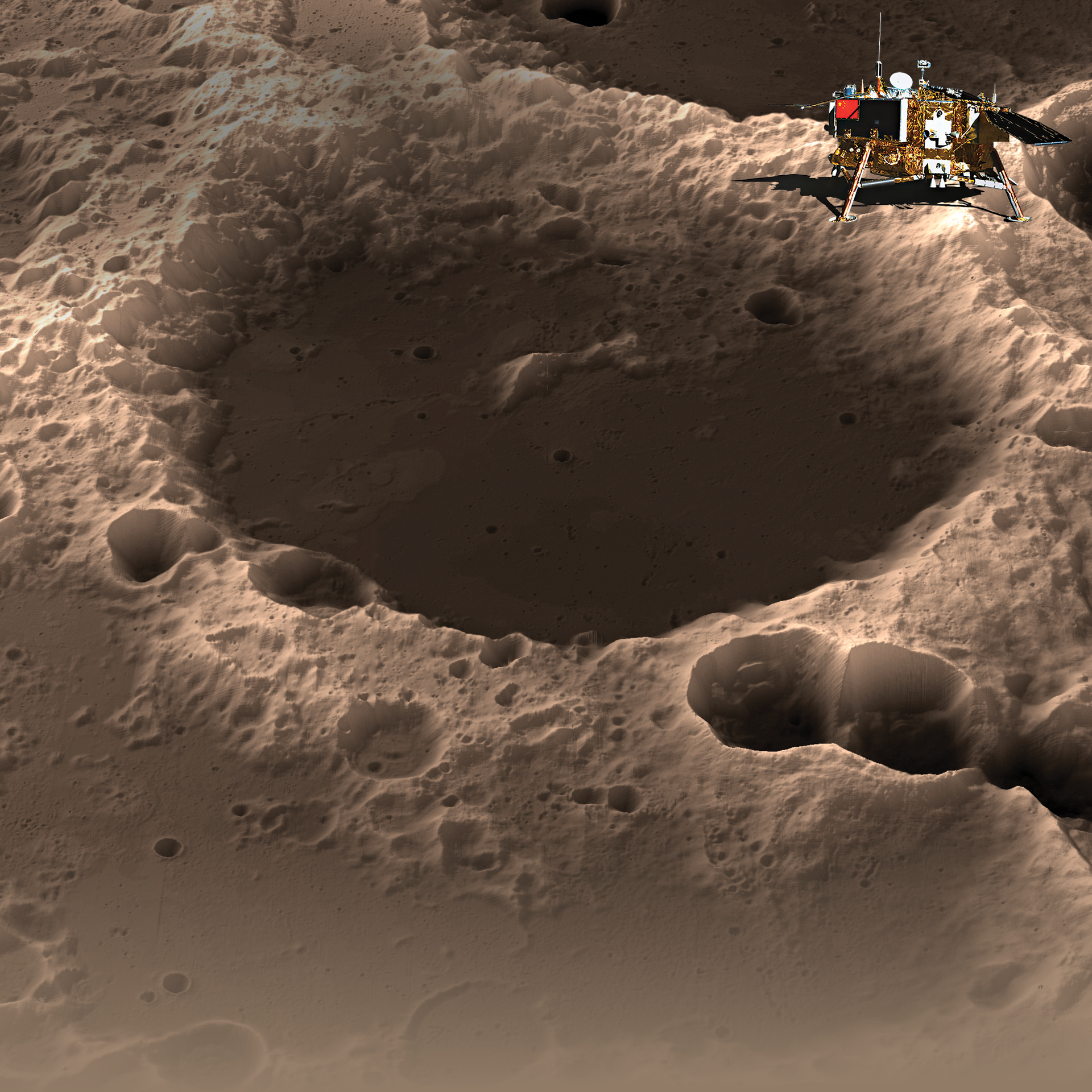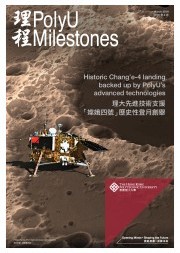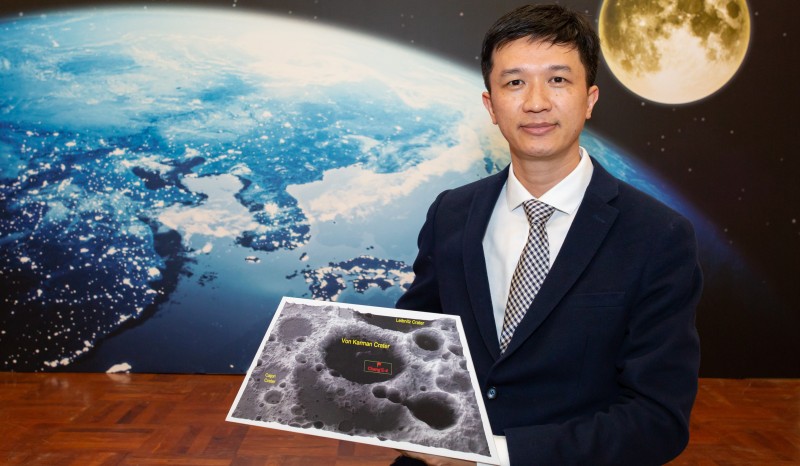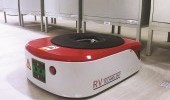
Cover Story
Historic Chang’e-4 landing backed up by PolyU’s advanced technologies
Finding the best location for landing
When the Chang’e-4 lander touched down at 177.6° east longitude and 45.5° south latitude in the unexplored South Pole-Aitken Basin region of the Moon, PolyU’s experts were overwhelmed after years of hard work in landing site characterisation and analysis. The researchers needed to find a site that was both safe and of scientific value, and the Von Kármán crater, a treasure-trove of geological data, fulfilled both criteria.
However, selecting the right site was not an easy task. In March 2016, Dr Wu Bo, Associate Professor in the Department of Land Surveying and Geo-Informatics, and his team began to amass a huge amount of lunar remote sensing data from multiple sources to create high-precision and high-resolution topographic models of two potential landing regions.
The first challenge was the mountainous, rugged terrain. As large boulders would block the progress of the rover, Yutu-2, and small rocks could become trapped in its wheels, Dr Wu’s team had to gather information on more than 400,000 craters and 20,000 boulders to find an area that was flat enough to allow the lander to touch down safely and the rover to explore freely. With elevation differences as large as 16 km, Chang’e-4’s descent design had to be nearly perpendicular.

On 8 December 2018, Chang’e-4 was successfully launched from the Xichang Satellite Launch Centre.
Communicating with Earth was the second challenge. “The Chang’e-4 landing site is on the far side of the Moon,” explained Dr Wu, “without direct radio communication from Earth.” The team therefore intensively studied the terrain of the candidate landing regions to identify potential obstructions to signal reception and data transmission between the lunar probe and the mission control centre on Earth. After the successful landing, these terrain data also helped Dr Wu’s team and CAST to schedule the activities of the lander and its companion rover.
You may be interested in...







